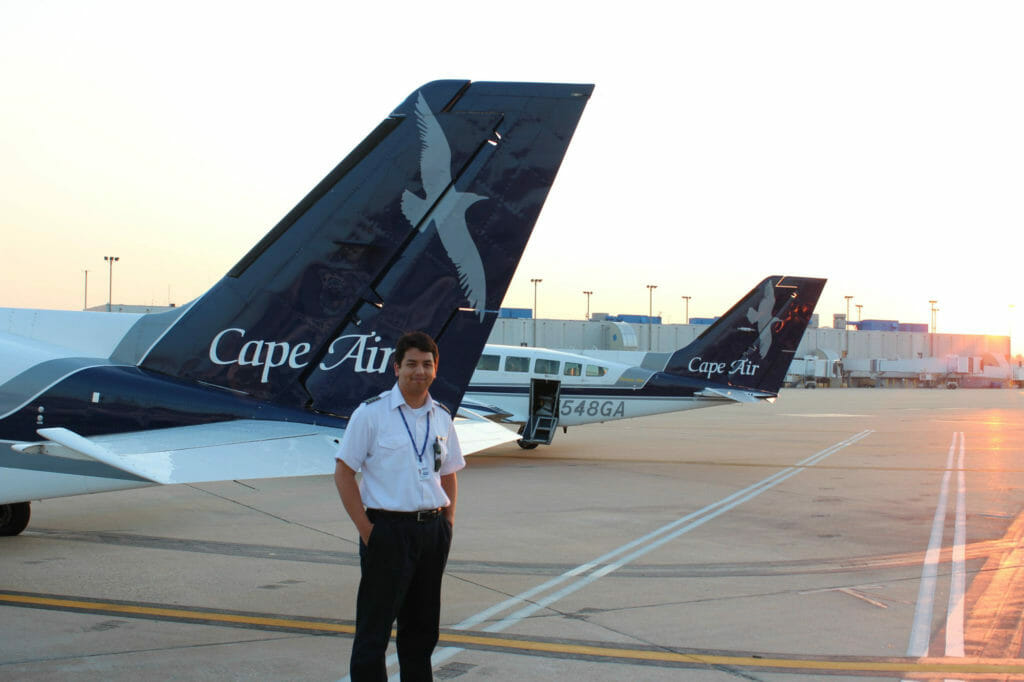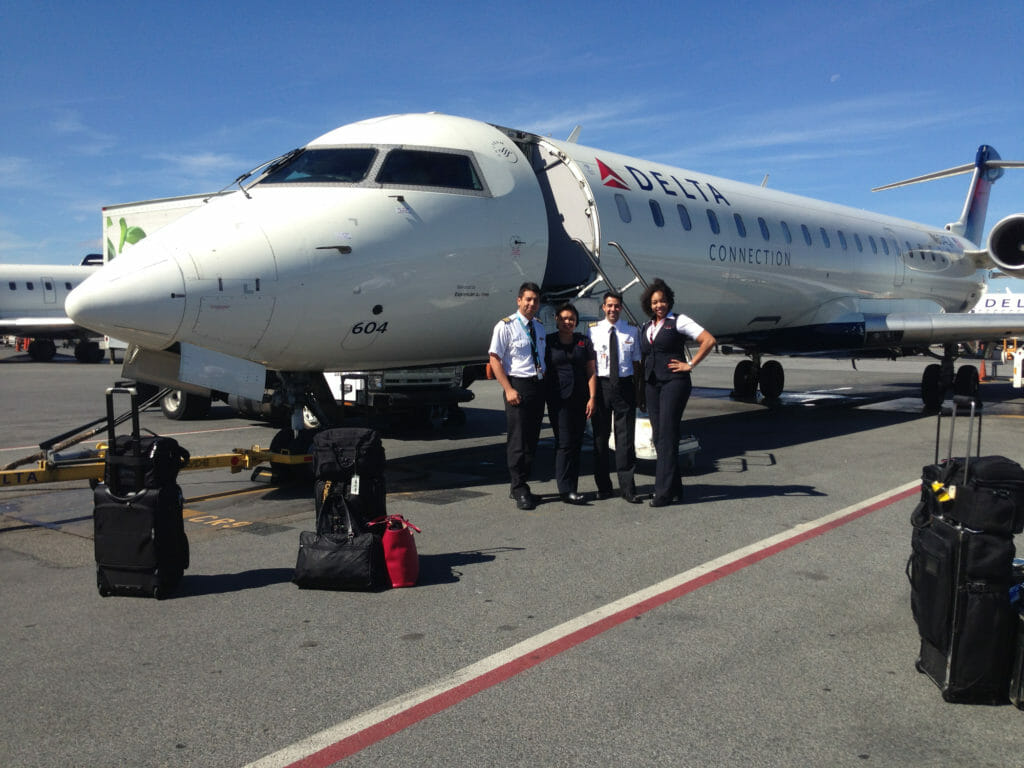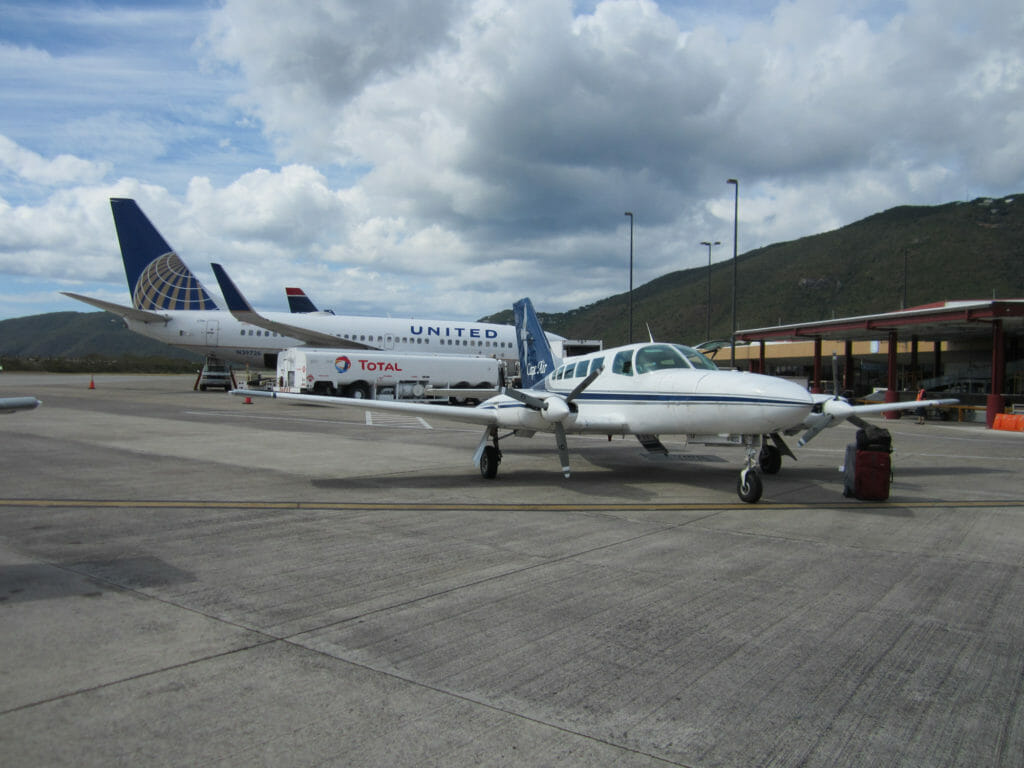
Image provided by John Hackworth
For as long as I can remember, I’ve been passionate about airplanes. All it takes is the sound of a plane flying overhead and regardless of where I am or who I’m with, I’m twisting head, torso, entire body, in an attempt to catch a glimpse. While I’ve always been passionate, I was hesitant as well and earned my undergraduate degree in business, opposed to pursuing a career in aviation. However, after a five-year program and a cumulative two years working experience in a variety of offices, I realized I had to at least try to become a pilot. As the first in my family to enter the aviation industry, I knew very little about what I was getting myself into nor what path was best. With a bit of research and a gut-shot decision, I figured my best bet was to get all my ratings, become a CFI, build my hours and get to the regionals as fast as possible. Fortunately for me and many others entering the field at the time, the pendulum of good fortune was swinging back in favor of the industry and the economic health of the airlines was rebounding. I managed to get my ratings, instruct and land my first airline job within four and a half years of starting my private pilot’s license.
Throughout my career, I’ve often wondered about what other paths I could have taken and opportunities I may have missed. While content where I am and therefore living without regret, I do enjoy hearing stories told by my fellow pilots about their experiences and paths. What I’ve gathered from these tales is that while uncertain in the beginning, one should not hesitate to go for it. Take that opportunity, with of course due diligence and research, that screams adventure or life out of the ordinary. While some don’t always work out as planned, you are nonetheless positioning yourself to learn about yourself, about airmanship and the industry into which you are attempting to enter. My colleague and friend, Steve Runnells, took a path vastly different from my own and yet we both work for the same airline. What I hope you take from this article and Steve’s journey is that there are many paths one can take and still have a fulfilling career.

Steve, like many of us, has been passionate about aviation for as long as he can remember. From a military family, Steve traveled and traveled often, which he attributes to his love for airplanes. After graduating high school, Steve set out to fulfill his dream and enrolled at Embry-Riddle Aeronautical University, Prescott Campus. Unfortunately, during his freshmen year, financial challenges forced Steve to leave and eventually relocate to Maine where he attended a local Part 61 flight school and earned his private pilot’s license. With his first rating in the books, Steve enrolled at Daniel Webster University in New Hampshire. However, due to personal and again financial constraints, Steve was forced to leave to help support his family. It wasn’t long before Steve realized he needed to get back to aviation and turned all his attention and efforts toward obtaining his ratings and building flight time as fast as possible. Steve obtained his ratings from ATP Flight School and immediately started instructing at the local Part 61 flight school in Maine where he had earned his private license. During this time, Steve flew a variety of aircraft for State Sponsored Pipeline and Fire Patrols. Over the next few years Steve, forced by the economic downturn of 2008, found himself living in Ohio, then Texas, working both as a Data Entry Analyst and flight instructor. Working days and attending school at night, Steve eventually earned his undergraduate degree.
Well on his way to building time and experience as a pilot, Steve was contacted by a friend flying in Tinian, Marianas Islands for a Part 135 carrier. Weighing his options and the opportunity to travel and fly in a unique environment, Steve picked up and moved to the Island of Tinian in the Pacific Ocean. Steve found employment with Star Marianas, a company that flew Cherokee 6s between the islands of Tinian and Saipan. With the title of Captain, Steve flew back and forth continuously between the islands, a short 12 to 15-minute trip. His favorite memories are the moonless nights, when the stars were bright and mirrored across the ocean. There were days when his first leg was watching the sun set and the final leg watching the sun rise. He often saw meteorites race across the night sky and witnessed the vivid reds, greens and blues mark its path. While living in Tinian, Steve traveled either by foot or moped and explored much of the islands vibrant culture and history, which WWII buffs will recall, is rich. All good things must come to an end, and after a year of crisscrossing the island channels, Steve returned to the U.S. to fly for Cape Air.
First it was flying the Cessna 402s around Cape Cod and the Islands, shooting approach after approach to minimums, single pilot. Then it was flying in Missouri, dodging thunderstorms and building quality instrument time. Eventually, Steve ended up in the Caribbean, hopping from one island to the next. It was here that Steve recalls the fun, yet challenging, experiences of shooting approaches into Nevis in inclement weather. While many of us have heard of NDB approaches and perhaps seen one while in training, few of my generation of aviators have flown one and in poor conditions. Unique to the Island of Nevis, the approach requires a pilot to first fly to the St. Kitts NDB, perform a procedure turn, and once outbound, descend to MDA, away from the mountains obscured by clouds. After another timed procedure, turn inbound, fly to Nevis and as soon as you have a visual of the island, request a contact approach. The runway in Nevis is one directional, meaning landings and takeoffs are always done towards the east. This adds yet another layer of complexity to landings which Steve recalls aided his overall skills and airmanship.

Image provided by John Hackworth
Steve eventually left Cape Air for a first officer position with ExpressJet Airlines, flying the CRJ out of Detroit. Four years later, he got the call to fly for JetBlue Airways as an EMB-190 pilot out of Boston, where he currently calls home. While our paths may have varied, we both wound up in the same place, grateful and fulfilled. I always enjoy hearing stories about the different paths pilots have taken – each unique and offering something valuable, both in richness of personal and professional development.
When faced with the uncertainty about which path you should take, don’t hesitate out of fear. Reaching for adventure and raw experience can lead you to that final goal. Regardless of the path you take, own it and remember to enjoy the process, which will enrich your enjoyment of the end game.














































































